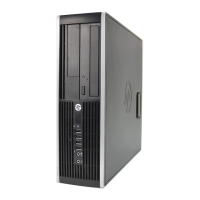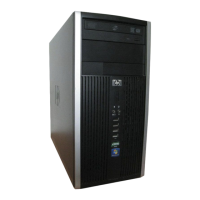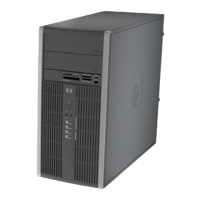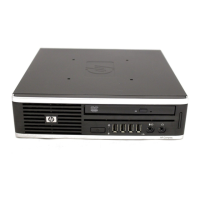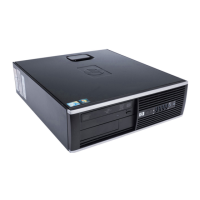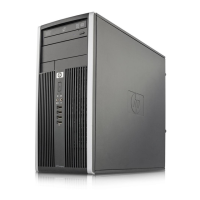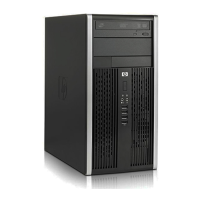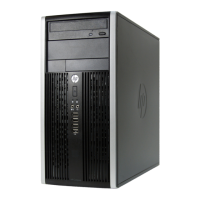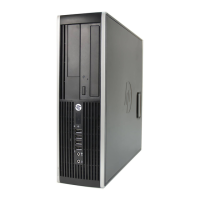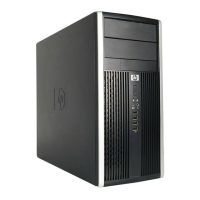5. If using a new heat sink, remove the protective covering from the bottom of the heat sink and
place it in position atop the processor.
6. Secure the heat sink to the system board, and then attach the heat sink control cable to the
system board if applicable.
CAUTION: If applicable, heat sink retaining screws should be tightened in diagonally opposite
pairs (as in an X) to evenly seat the heat sink on the processor. This is especially important as
the pins on the socket are very fragile and any damage to them may require replacing the
system board.
NOTE: After installing a new processor onto the system board, always update the system ROM to
ensure that the latest version of the BIOS is being used on the computer. The latest system BIOS can
be found on the Web at:
http://h18000.www1.hp.com/support/files.
System Board
CAUTION: Be very careful when removing or replacing the system board to prevent damaging
it.
1. Prepare the computer for disassembly (Preparation for Disassembly on page 31).
2. Remove the computer access panel (
Computer Access Panel on page 40).
3. Remove the front bezel (
Front Bezel on page 41).
4. Remove the optical drive (
Removing the Existing Optical Drive on page 48).
5. Remove the memory modules (
Installing Additional Memory on page 43).
6. Remove the hard drive (
Hard Drive on page 51).
7. Remove the hard drive cage (
Hard Drive Cage on page 55).
8. Remove the front fan (
Front Fan on page 56).
9. Remove the heat sink (
Heat sink on page 60).
10. Remove the front I/O panel cage:
a. Remove the Torx T15 screw from the right side of the cage that secures the I/O panel cage
to the front of the chassis (1).
64 Chapter 6 Removal and Replacement Procedures
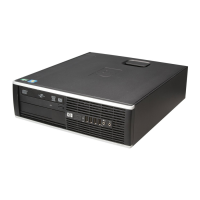
